To-Ya and his Ice Family
14.6.2013 | 10:00
In the fall of 1936 a young Icelandic physician, Eyţór Gunnarsson, was studying and working at the ear-clinic of the University Hospital in Munich, Germany. One afternoon, when he was enjoying himself with friends at the Oktoberfest, he came across an interesting show in a small circus tent. The act was called Eismenschen, or Ice People, and the artists claimed they originated from Iceland in the far north. They were albinos and their show was called Sun-Play (Sonnenspiele; "original isländische Volksspiele").
Doctor Gunnarsson bought a ticket to watch the show and he was not amused to say the least. The actors, some of which were not albinos, pretending to be Icelanders, presented an sketch which was supposed to be a depiction of a Reykjavík garden in bloom. Flowers and trees of paper sprung out while the fake "Icelanders" entertained with singing and tricks from the far north. Possibly, some fish-beating was going on too.
The patriotism of doctor Gunnarsson took some severe blows at the Oktoberfest in Munich, when he witnessed albinos with bushy hair, reddish eyes and pretending to be Icelanders in a rather primitive manner. He immediately contacted the Danish consulate in Munich to file a complaint against these imposters, which he mistakenly called Eismänschen or ice midgets. He attached his complaint with the above picture of the troupe of albinos.
The Danish Consulate immediately contacted to the German police, who investigated the act, but found no reason to intervene. The leader of the troupe argued that his parents were Icelandic. But under the notorious interrogating methods of the German Police he eventually admitted that this was not an ethnological act, that it had very little to do with Iceland and was first and foremost an artistic presentation and expression.
The leader of the circus-troupe Eismenschen finally admitted he was Austrian by birth and had no ties to Iceland whatsoever. The complaint of the Icelandic doctor was then forwarded with a short report to the Foreign Ministry in Copenhagen, where the officiasl found the whole matter rather amusing. The ministry notified the Chargé d´Affaires in Munich that no further actions would be taken against the Ice People.
To-Ya and his Ice family and Tom Jack (Karl Breu)
The Eismenschen troupe, which was not to the liking of doctor Gunnarsson in 1936, was the remnants of a quite famous circus troupe called To-Ya und die Eismenschen, which travelled widely around Europe in the 1920 and 30ies. In Great Britain the troupe was called To-Ya and his Ice Family. The troupe was founded by an albino artist by the name of Karl Breu. Breu was born in the Moravian town of Dubnany (now the Czech Republic) in 1884 (or 1876 according to other sources). Dubnany was then a part of the Austro-Hungarian Empire. Karl Breu´s parents, who worked in the glass and crystal industry, died when Karl was young and he was brought up by his mother´s family in the town of Lenora (Germ. Eleonorenhain).
At a very early age Karl Breu was fascinated by the circus and got a job in one as a clown. But very quickly he turned to magic acts, influenced and fascinated by Harry Houdini. Houdini was Jewish (originally Erik Weisz) and Breu an albino, so there was not so much difference. Breu very quickly adapted the stage name The Ice King (Eiskönig), with reference to his looks. However, when he engaged in escape acts, untying knots and getting out of chains and straitjackets, he became known as Tom Jack. As Tom Jack he travelled all over Europe and in London he became famous for being thrown from the Tower Bridge all chained up inside a barrel. Tom Jack (Karl Breu) nearly met his maker in the Thames that day. At the peak of his career he was famous for his great white fuzzy hair.
Tom Jack´s (Breuer´s) wife was also an albino and called herself Wally Paradise. They had two children together. Together with the children and different albinos, as well as several other artists wearing white wigs, they were the Ice King and his family.
Just before WWII Tom Jack retired and purchased a plot of land in Lenora with the intention of retiring there with his family. Their time there was brief however as following WWII, and despite serving the Allied forces as an interpreter, Tom Jack and his family were the victims of displacement. He belonged to the German minority. After the war they settled in Beinstein, Germany and carried their circus activities on for some time there. Breu died in Beinstein in 1953. He is still the most famous son of the town of Lenora in the Czech Republic and is remembered for a foundation he sponsored for orphan children.
Here are some snapshots from the career of the "Eismenschen" troupe:
This freezing Arctic act was obviously very different from the Sonnenspiele act at the Oktoberfest in Munich in 1936. Print by the Adolph Friedländer Company 1935. Jaap Best Collection, Teylers Museum.
The Ice family in the fantastic collection of Jaap Best
The printing firm of Adolph Friedländer (1851-1904) in Hamburg specialized in the designing and printing of posters for the amusement industry and especially circuses. In 1935 this firm, which was then run by the two sons of Adolph Friedländer, printed some small posters with the acts of the To-Ya and his Ice family troupe. This was only shortly before the Nazi expropriated this firm as they gradually did all Jewish businesses. The firm always produced high quality lithographs and had many designers and artists who contributed to this interesting and colourful printing activity. Everyone who wanted to be something in the circus arena, had a poster created by the Adolph Friedländer firm in Hamburg.
A great collection of the A. Friedländer´s poster and prints can today be found and studied in the collection of the Dutch Circus-collector Jaap Best. The collection is marvellously presented on this Dutch website. Here I found the 1935 promotion posters for To Ya and his Ice family, and information that cast light on the circus troupe which doctor Gunnarsson resented so much.
No information can be found on whether the Ice Family troupe kept penguins. Most likely they were added to the poster to attract gullible audience (Friedländer 1935). The Jaap Best Collection, Teylers Museum.
The Ice Family was a obvious mixture of good folks from the North- and the South-Poles, Greenland, Iceland, and Lappland. (Friedländer 1935). The Jaap Best Collection, Teylers Museum.
Today this valuable collection is kept at the world famous Teylers-museum in the city of Haarlem. Here I also discovered two hilarious posters with the Icelandic master of the ancient Icelandic wrestling called glíma. Jóhannes Jósefsson, who later engaged in the Hotel-business in Iceland was an Icelandic Glíma-master in his younger days. in 1909 he was obviously trying to promote the ancient glíma as a self-defence art. Posters for Adolph Friedländer could nothing but help in that effort.
Jóhannes Jósefsson,"The boy who can throw you any moment he likes to". The Jaap Best Collection, Teylers Museum.
Tom Jack escapes from his chains in front of the baffled police forces of all countries. A poster printed by the Adolph Friedländer company in 1910. The Jaap Best Collection, Teylers Museum.
This blog entry is an English version of Dr. V. Ö. Vilhálmsson´s earlier articles about the Eismenschen in Icelandic; See here and here. The information in this article can be quoted with reference to the source.
Meginflokkur: Menning og listir | Aukaflokkar: Furđufornleifafrćđi, Spaugilegt | Breytt 14.5.2022 kl. 08:36 | Facebook










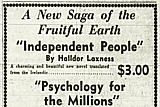
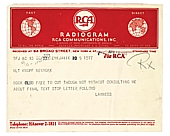




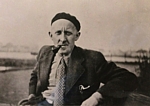
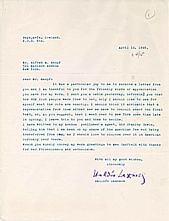















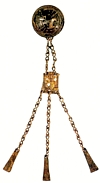












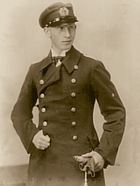

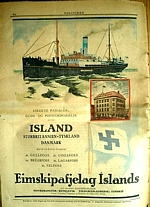





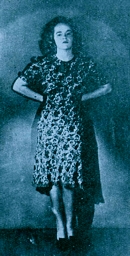
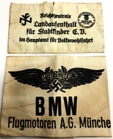





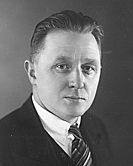







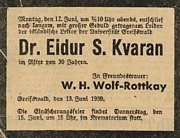



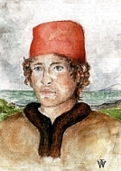
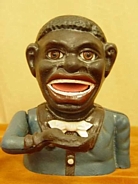




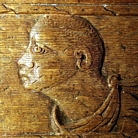




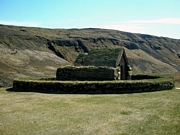
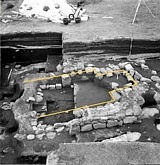
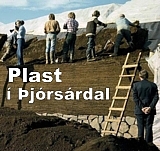







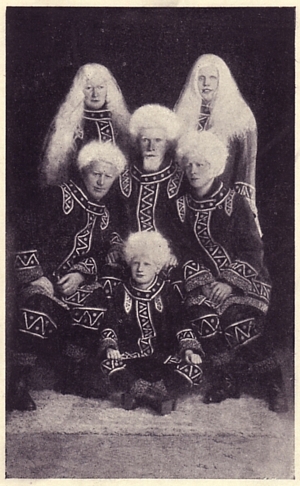



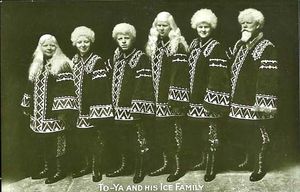
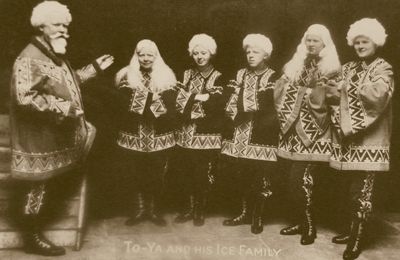
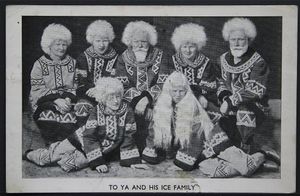


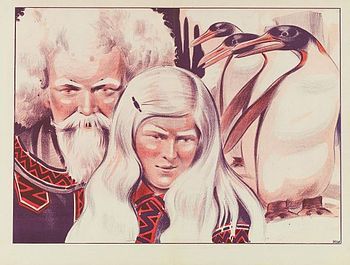




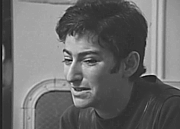














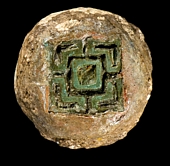
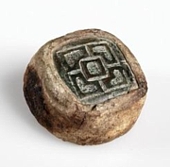


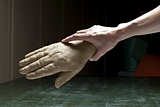





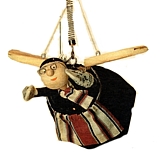


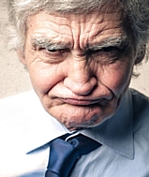







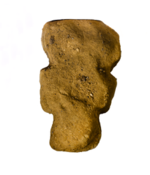




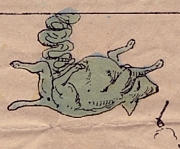
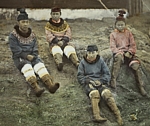




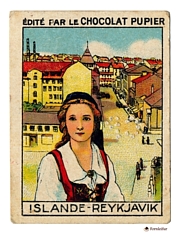





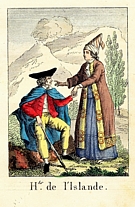


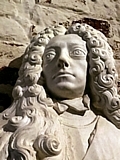
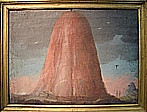
































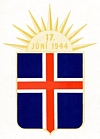










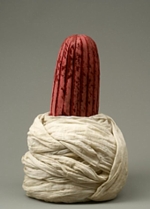
























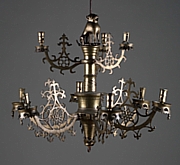






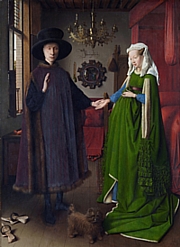




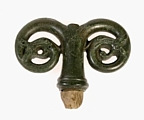











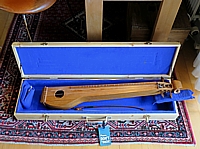







Athugasemdir
Ţađ er skrýtiđ hvernig ţú nennir ađ velta ţér upp úr ţessu, en verra er hvernig ţú ert ađ dylgja um föđur minn, ţann rólegheita og sómamann. Ţetta er fyrir daga sjónvarps og nútíma fjölmiđlunar, og ţađ er öruggt, ađ mjög margir almennir áhorfendur hafa í raun og veru taliđ ađ hér vćru Íslendingar á ferđ, en á ţessum árum var landiđ afar lítt ţekkt erlendis. Ţađ, ađ Danir hafi skemmti sér yfir ţessu kemur ekki á óvart. Ţeir hafa alltaf fyrirlitiđ Íslendinga, ţótt Vigdís og aörir örvitar ímyndi sér annađ.
Vilhjálmur Eyţórsson, 15.6.2013 kl. 23:03
Sćll nafni, ég er ekki međ neinar dylgjur í garđ föđur ţinn. Hann var á Oktoberfest í München áriđ 1936, fór inn í tjald og horfđi á atriđi sem fór fyrir brjóstiđ á honum. Ég myndi líklega hafa móđgast líka, hefđi ég veriđ uppi á ţessum tíma.
Sagan fjallar ţó ekki svo mikiđ um föđur ţinn, heldur ţá sem móđguđu hann. Ţeir voru sirkusartistar, en sirkus er ekki veruleiki. Albínóar voru enn "furđudýr" sem ţurftu ađ lifa á ţví ađ skemmta öđrum eđa vekja undran međ útliti sínu. Ţađ var litiđ niđur á albínóa eins og flesta minnihlutahópa. Ekki ćtla ég ađ segja, ađ ég viti hve vitlausir Ţjóđverjar voru á ţessum tíma, en margt bendir vissulega til ţess (ţeir höfđu kosiđ Hitler yfir sig), og hugsanlega hefur veriđ mögulegt ađ telja ţeim sem á Oktoberfest mćttu, trú um hvađ sem er, t.d. ađ Íslendingar vćru albínóar sem vćru međ mörgćsir í bakgarđinum.
Nokkuđ getur veriđ til í ţví hjá ţér, ađ einhverjir Danir fyrirlíti Íslendinga, eins og sumir Danir, líkt og Íslendingar, fyrirlíta útlendinga. En ég hef ekki orđiđ svo mikiđ var viđ ţađ, ţótt ég hafi búiđ í landi ţeirra í yfir 30 ár.
Ég hef ţó aldrei heyrt um Íslending sem fór á kabarett áriđ 1936, og móđgađist vegna ţess ađ hann sá forspiliđ ađ útrýmingu 6 milljóna manna. En eins og ţú veist létu menn sig hafa ţađ án mikilla mótmćla, ađ gyđingar vćru dregnir í svađiđ á öllum sviđum í ţýsku ţjóđfélagi, og enginn sagđi neitt, heldur ekki ţegar ţeir voru fjarlćgđir til útrýmingar. Flestir báru ţví viđ ađ ţeir vissu ekkert og hefđu ekkert séđ. Enginn móđgađist eins og fađir ţinn - en hefđu kannski betur gert ţađ.
Svo ef eitthvađ er, Vilhjálmur, ţá er ég hrifinn af ţví sem karl fađir ţinn gerđi áriđ 1936.
FORNLEIFUR, 16.6.2013 kl. 22:18
Bćta viđ athugasemd [Innskráning]
Ekki er lengur hćgt ađ skrifa athugasemdir viđ fćrsluna, ţar sem tímamörk á athugasemdir eru liđin.